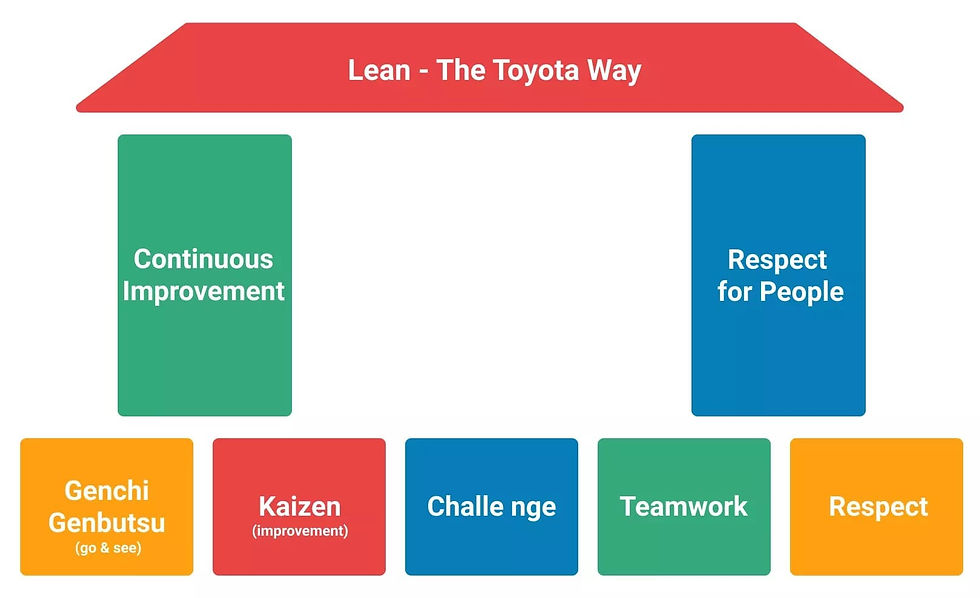The Future of Lean Management Techniques in 2025
- islam Arid

- Nov 12, 2024
- 4 min read

Lean management is shifting gears and evolving as we approach 2025. With the backdrop of rapid technological advancements and changing workforce dynamics, it's crucial to explore how lean management techniques will adapt to meet these new challenges and seize emerging opportunities.
Understanding Lean Management
Lean management focuses on minimizing waste within manufacturing systems while enhancing productivity. Originating from the Toyota Production System after World War II, lean practices have spread across various industries globally. The main principles of lean management include identifying value, mapping value streams, optimizing flow, implementing pull systems, and promoting continuous improvement.
Many methodologies fall under the lean umbrella, such as Kaizen, Six Sigma, and Total Quality Management (TQM). As we near 2025, these methods will evolve alongside technological developments and global market changes.
The Influence of Technology on Lean Management
Technology continues to transform industries and will significantly influence lean management techniques. Innovations like artificial intelligence (AI), machine learning, and the Internet of Things (IoT) will help organizations make quicker decisions based on real-time data.
AI and Machine Learning
AI and machine learning streamline data collection and analysis, enabling companies to find waste and inefficiencies faster. For instance, businesses that use AI to process data can reduce their operational costs by up to 30%, as they quickly identify patterns that might indicate problems.
Example Applications
Predictive Maintenance: AI systems can analyze machinery data to forecast maintenance needs. For example, manufacturing plants that use predictive maintenance report a 25% reduction in equipment downtime.
Quality Control: Machine learning can enhance quality control. Algorithms that identify production anomalies can cut defects by as much as 50%, ensuring that issues are addressed before they impact the final product.
The Internet of Things (IoT)
IoT technology provides seamless connectivity between machines, workers, and systems. This interconnectedness improves visibility across operations, enabling better tracking of resources and workflows.
Example Applications
Resource Monitoring: IoT sensors can monitor inventory and machine usage in real-time. Companies using IoT for resource tracking report up to a 20% improvement in resource allocation.
Workflow Automation: By automating various systems, organizations can reduce bureaucratic delays and enhance workflow efficiency. Studies show that implementing IoT solutions can boost productivity by around 30%.
Lean Management in Remote Work Environments
The rise of remote work presents unique challenges and opportunities for lean management. While physical separation can complicate communication, it also encourages innovative workflow management.
Emphasizing Digital Tools
Digital tools are vital for facilitating collaboration and maintaining lean practices in remote settings. Technologies like video conferencing, collaboration platforms, and project management software become critical in driving continuous improvement, even when teams are distributed.
Creating a Lean Culture Online
Developing a lean culture remotely calls for a change in mindset. Organizations should promote transparency and communication, even in a virtual environment. Regular check-ins, sharing data, and celebrating small achievements can keep motivation high among remote teams.
Sustainability and Lean Management
With environmental concerns gaining traction, integrating sustainability into lean management is becoming essential. Organizations must focus not just on reducing resource and time waste, but also on their environmental impact.
Circular Economy Principles
The circular economy prioritizes reusing resources to reduce waste. Lean management’s focus on value maximization aligns well with this model. Companies are increasingly adopting practices like recycling, refurbishing, and repurposing to enhance sustainability.
Eco-friendly Innovations
In 2025, companies may adapt lean frameworks to support eco-friendly innovations. This could involve investing in energy-efficient machinery and sustainable supply chains, significantly minimizing their carbon footprints.
Better Integration with Agile Methods
Collaboration between lean and agile methodologies is set to influence future management techniques. Many organizations are already merging agile practices to improve flexibility and responsiveness to market demands.
Continuous Improvement Cycles
Both lean and agile emphasize continuous improvement but approach it from different angles. Lean targets long-term waste elimination while agile focuses on iterative development. Companies combining these methodologies can create a robust system that swiftly responds to changing market conditions.
Value Co-Creation
Engaging customers and stakeholders fosters collaboration, allowing companies to better align their offerings with market needs. Lean methods will increasingly incorporate agile principles, focusing on customer feedback and rapid prototyping to refine services effectively.
Skills and Competencies for 2025
As lean management evolves, so too must workforce skills. Organizations need to prioritize employee training to ensure teams can effectively implement lean techniques.
Data Literacy
As technology plays a larger role in operations, understanding data will be critical. Companies should invest in training employees to analyze data and make informed decisions.
Collaborative Mindset
Encouraging teamwork and open communication will help organizations adapt lean practices in a fast-changing environment. Fostering a collaborative culture will be vital for successful implementation.
Challenges to Overcome
Even with evolving lean management techniques, several challenges will hinder successful implementation in 2025.
Resistance to Change
Change management is a persistent challenge. Employees may resist new practices, especially those comfortable with existing systems. Organizations must clearly communicate the benefits of lean practices and involve employees in the transition to reduce resistance.
Resource Limitations
Implementing new technologies often requires substantial investment. Organizations should strategically allocate resources to support lean initiatives effectively.
Measuring Success
Establishing clear metrics is essential for tracking progress and identifying areas for improvement. Defining success for lean initiatives can be complex, making consistent measurement vital.

Looking Ahead to 2025
As we approach 2025, lean management methods are set to continue evolving amid technological advancements, changing workforce dynamics, and urgent sustainability concerns. Organizations should embrace innovation and foster a culture of continuous improvement to thrive in this ever-changing landscape.
Preparing for these shifts involves a commitment to training, adaptability, and strategic resource planning. With the right mindset, the future of lean management will not only enhance operational efficiency but also contribute positively to a sustainable future. As we stand at the threshold of this new era, it's evident that lean management will remain a vital part of successful organizational practices.























Comments